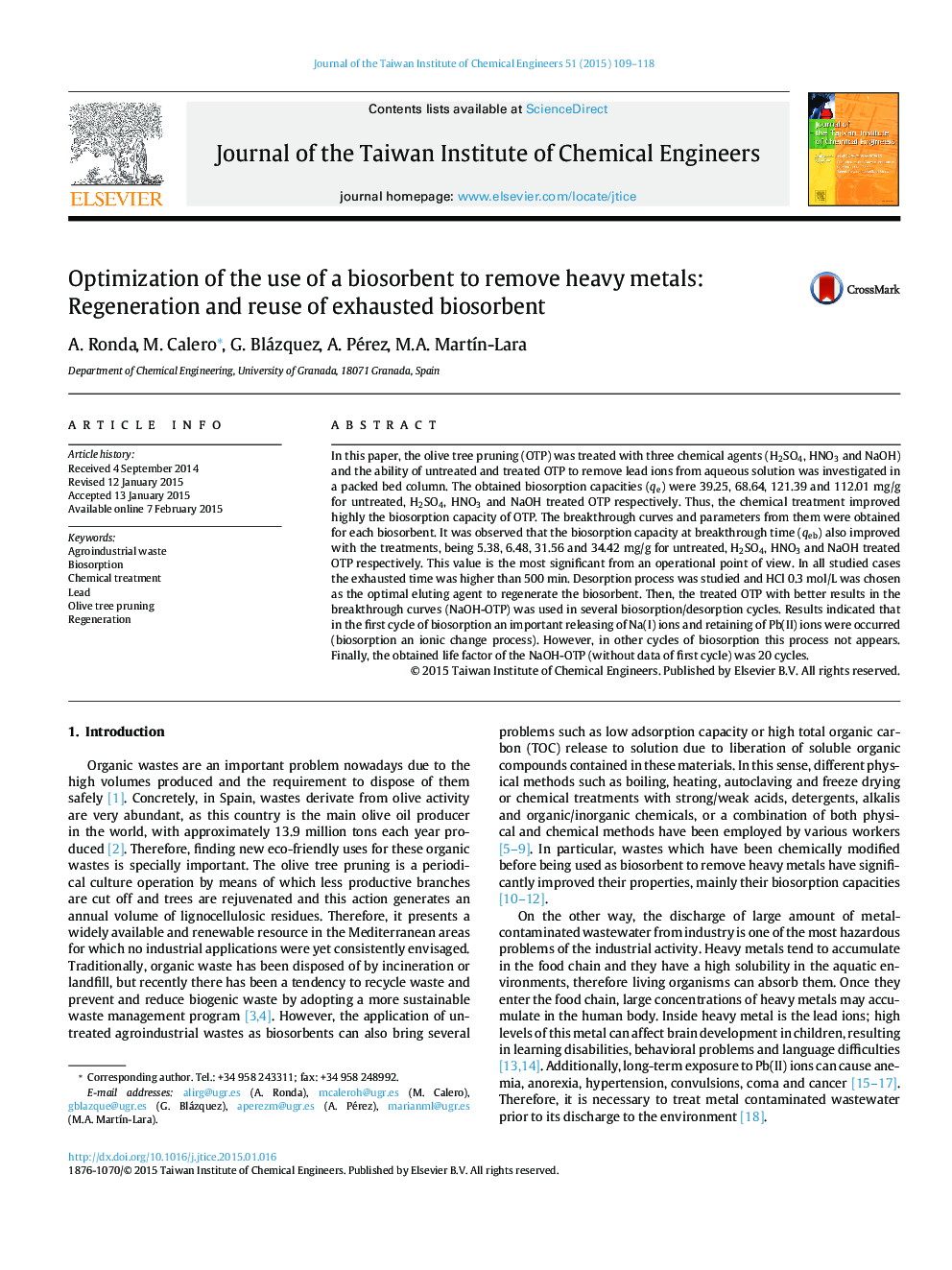| Article ID | Journal | Published Year | Pages | File Type |
|---|---|---|---|---|
| 690777 | Journal of the Taiwan Institute of Chemical Engineers | 2015 | 10 Pages |
•The biosorption capacity of olive tree pruning was studied in a packed bed column.•Breakthrough curves and parameters from them were obtained for each studied case.•The best results were obtained with olive tree pruning treated with NaOH.•Several biosorption/desorption cycles were used to obtain the life factor.
In this paper, the olive tree pruning (OTP) was treated with three chemical agents (H2SO4, HNO3 and NaOH) and the ability of untreated and treated OTP to remove lead ions from aqueous solution was investigated in a packed bed column. The obtained biosorption capacities (qe) were 39.25, 68.64, 121.39 and 112.01 mg/g for untreated, H2SO4, HNO3 and NaOH treated OTP respectively. Thus, the chemical treatment improved highly the biosorption capacity of OTP. The breakthrough curves and parameters from them were obtained for each biosorbent. It was observed that the biosorption capacity at breakthrough time (qeb) also improved with the treatments, being 5.38, 6.48, 31.56 and 34.42 mg/g for untreated, H2SO4, HNO3 and NaOH treated OTP respectively. This value is the most significant from an operational point of view. In all studied cases the exhausted time was higher than 500 min. Desorption process was studied and HCl 0.3 mol/L was chosen as the optimal eluting agent to regenerate the biosorbent. Then, the treated OTP with better results in the breakthrough curves (NaOH-OTP) was used in several biosorption/desorption cycles. Results indicated that in the first cycle of biosorption an important releasing of Na(I) ions and retaining of Pb(II) ions were occurred (biosorption an ionic change process). However, in other cycles of biosorption this process not appears. Finally, the obtained life factor of the NaOH-OTP (without data of first cycle) was 20 cycles.
